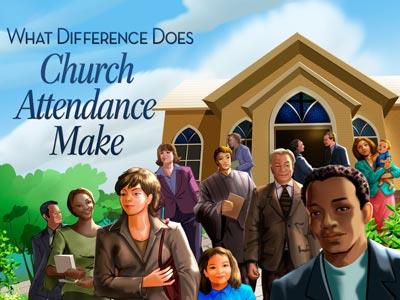-
God's Nobodies
Contributed by Joseph Smith on Nov 28, 2017 (message contributor)
Summary: We as the church, facing today's challenges, think of ourselves as nobodies. But we are God's kind of nobodies, those in whom He has been at work to make changes, and we are needed by the world around us.
(Originally preached at Luther Rice Memorial Baptist Church, Silver Spring, MD, Aug. 12, 1973; subsequently, with variations, at Woodbrook Baptist Church, Baltimore, MD, Aug. 19, 1973; Viers Mill Baptist Church, Rockville, MD, Sept. 9, 1973; Bethesda First Baptist Church, Bethesda, MD, Oct. 14, 1973; Greenbelt Baptist Church, Greenbelt, MD, Nov. 11, 1973; First Baptist Church, Silver Spring, MD, Dec. 30, 1973; St. Matthew Presbyterian Church, Silver Spring, MD, July 14, 1974; First Baptist Church, Wheaton, MD, July 21, 1974; Carrollan Woods Baptist Church, New Carrollton, MD, Aug. 4, 1974; First Baptist Church, Laurel, MD, Aug. 18, 1974; Germantown Baptist Church, Germantown, MD, Aug. 25, 1974; Kensington Baptist Church, Kensington, MD, Sept. 22, 1974; Wisconsin Avenue Baptist Church, Washington, DC, Oct. 13, 1974; Belair Baptist Church, Bowie, MD, Aug. 31, 1975; University of Maryland Chapel, College Park, MD, Sept. 21, 1975; Riverside Baptist Church, Washington, DC, Dec. 9, 1975; Takoma Park Baptist Church, Washington, DC, Feb. 22, 1976; Clifton Park Baptist Church, Silver Spring, MD, Aug. 15, 1976; Calvary Hill Baptist Church, Alexandria, VA, June 18, 1978; Hillcrest Baptist Church, Hillcrest Heights, MD, Sept. 23, 1979; First Baptist Church, Gaithersburg, MD Oct. 7, 1979; Clinton Baptist Church, Clinton, MD, Oct. 28, 1979; Westover Baptist Church, Arlington, vA (youth retreat), Apr. 24,1982; Calverton Baptist Church, Silver Spring, MD July 25, 1982)
In his novel, “Go Tell It on the Mountain,” James Baldwin has given us the plaintive description of a boy who frequently made his way to the front entrance of the great main branch of the New York City Library. Baldwin tells us that the child found the building and what it represented enormously attractive; the great stone lions guarding the steps seemed to him at a distance to be but oversized friendly pussycats. The building and its promise of learning offered great attraction; but the boy could never quite bring himself to enter the library and to check out a book. Somehow as he approached it, the building loomed too large, the halls too long. It became frightening, it communicated in all its silence that it was not for him, that he did not belong there. And so always the boy would return to Harlem and would go back to the branch library in his neighborhood, there to pore over books he had read many times, hoping somehow to become somebody and to feel as though he belonged, really belonged in the great main library, lions and all!
Baldwin's boy, in a word, felt that he was nobody. Something deep within him telegraphed a continuing silent message to him: you're a nobody, you don't belong in this grand hall. Wait until you are somebody. As for now, you're a nobody.
Indeed this is a universal human experience. Each of us has those moments in which he senses his inadequacy, his lack of worth. Each of us comes on occasions, a set of circumstances in which he can only feel that he does not belong, that here, in this time and place, he is a nobody. Martin Luther King said it well as he spoke of black America: For years the black man in America has been given a sense of nobodiness; only now is he developing a sense of somebodiness.
The people called Israel faced just such a crisis in their own experience. The Old Testament in depicting those crucial events of the Exodus, these days when Moses led them out into the desert to seek their destiny, is quite realistic. The Scripture reminds us that this was indeed a nondescript and motley crew, that those who followed Moses were a rag-tag-and-bobtail band of ne'er do wells. They were no people at all, but they became a people only because of what God did in their midst. They were nobodies; but they became God's nobodies because they shared an experience of God’s activity. They became somebody, and because God chose them and forged them into something, they moved out of their nobodiness.
So Israel came to have an identity, as we would put it in our 20th Century psychological language. She had had a massive identity crisis, but now she knew who she was. In fact, she came to know all too well.
By the time of the 8th century before Christ she had developed a strong heritage, a noble tradition. In her own eyes she was a proud and worthy nation. She had forgotten how she came to be, how her ancestor were the despised Hapiru whom other nations had regarded with scorn and fear. She was really somebody.
But into her midst in that 8th century BC came the prophet Hosea, with a terrible and frightful image. Hosea was an intensely personal and emotional prophet, and he drew on the deepest and most moving symbols at his command. The prophet describes at the beginning of his book how he sensed the Lord; command to do a terrible thing, an unbelievable thing – to take as his wife Gomer, the unfaithful and promiscuous Gomer. And Gomer is to bear his children, children whose names were to be living pictures of the anger of God at his people. We need not linger long over the details of the story, but we do need to look at these children and what they represent.

 Sermon Central
Sermon Central



